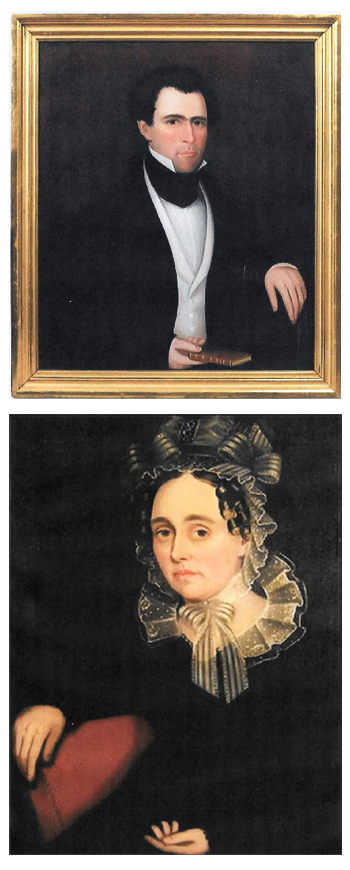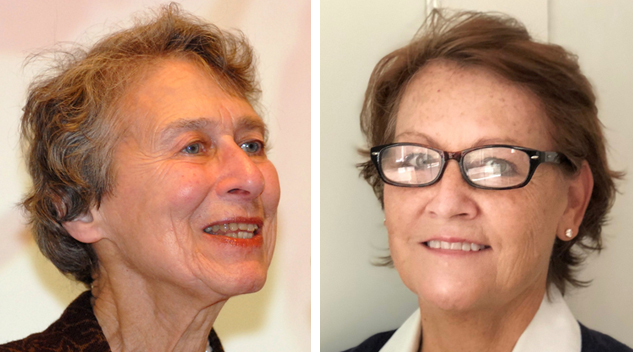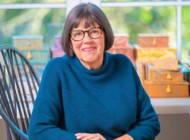Nearly 60 years ago, the portrait painter Ammi Phillips was introduced to the world by Barbara and Larry Holdridge in their article in the Berkshire Eagle titled “Found: a Berkshire Old Master.” The Holdridges’ research convincingly identified Phillips as the masterful painter variously known only as the Border Limner and the Kent Limner. Subsequent articles by the Holdridges followed before the fall of 1968, when the Museum of American Folk Art and the Albany Institute of History and Art mounted a major exhibit of Phillips’ portraits, together with the publication of a comprehensive book, Ammi Phillips: Portrait Painter, with an introduction by folk art authority Mary Black. Barbara Holdridge, who had a career in spoken-word recordings and book publishing, continued to research Phillips, providing her opinion when it was solicited. Melanie Beal Marks is a professional genealogist and historic research consultant whose company, CT House Histories, LLC, was hired by a private collector to research the provenance of several Ammi Phillips portraits in their collection. Marks reached out to Holdridge for assistance on several Ammi Phillips portraits in August 2017, and since then, the two have been discovering new things about Phillips. Antiques and The Arts Weekly caught up with the pair to find out what they have unearthed about Phillips’ work, more specifically about two portraits: “Betsy Sutherland” and “Man Sitting in a Painted Chair Holding a Book.”
What has been your goal in researching Ammi Phillips’ portraits?
MM: Our main objective is to be able to answer our client’s question, “Can you determine the identity of the sitters in these two portraits?” We were provided the name of “Betsy Sutherland,” but we know nothing about her, where she came from, who her family was, etc. The same goes for the gentleman. We were given the name “Samuel Morton” but, again, no other information as to where he came from, where he lived nor who his family was. For him, we are looking at connections to similar portraits from Columbia County, New York, as a possible lead.
Where does your research methodology start? What else do you look at?
MM: We always start with the provenance that has been provided to us. Sometimes it’s accurate and sometimes it isn’t. With “Betsy Sutherland,” we have developed a provenance back to the John Gordon Gallery in New York City. We know that Gordon curated an exhibition at the Monmouth Museum in New Jersey in September 1975, and we are currently tracking down this lead.
BH: Identification can be based on a number of possible clues: where it comes from, the history of ownership, any names or dates on the painting or to clues depicted in the painting itself, such as newspaper names and dates or book title, style of clothing and background color. Sometimes, if the frame is original, that can help date a painting. If relevant to the search, we sometimes use infrared reflectography to analyze the layers of the painting.
What discoveries has your research unearthed?
MM: While researching “unidentified” Ammi Phillips portraits for our client, we came across an appraisal list in the probate records for a “Portrait of a Young Woman Holding Pinks,” which we discovered had been sold at Sotheby’s in January 2007. The portrait “of a daughter” was mentioned, as were her parents, who were known subjects and who were also painted by Ammi. The three portraits were also listed in another probate record that led us to research and confirm the “daughter” as Myra Ann Raymond Haxtun Wheeler. Another exciting discovery we made regarding Myra was through locating her 1872 passport application, which provided her facial features. Ammi captured her features exactly as she had listed them: oval face, high-forehead, rounded chin, slender nose and brown eyes.

TOP: “Man Sitting in a Painted Chair Holding a Book” by
Ammi Phillips.
BOTTOM: “Betsy Sutherland” by Ammi Phillips.
What is still left to discover about Ammi Phillips?
BH: We don’t yet know how he got his start as a portrait painter or what his training was. We also don’t know whether he ever painted portraits of his own family or a self-portrait, whether he ever painted landscapes and whether several printed references to works of his – a political poster and an inn sign – are still in existence somewhere. The lodestone of research, if this were ever to turn up, would be Ammi Phillips’ account book, meticulously itemizing his monthly sales, with clients’ names and proceeds. Somewhere there may be a descendant of his who still has such a treasure – a possibility we are actively pursuing.
Do these discoveries rewrite previous scholarship on Ammi Phillips? Will you publish it?
MM: I don’t think that what we are doing is rewriting previous scholarship on Ammi Phillips as the painter. Our research is primarily turning many of these previously “unidentified” Ammi portraits into “identified” ones. There are possibly hundreds still out there. As for future publishing, we have discussed publishing another book based on all of this newly developed research with the hope to further expand the findings of Barbara and Larry Holdridge, Mary Black, Stacy C. Hollander and Howard P. Fertig. We will “revisit” this idea and hope to make it a reality in the near future.
Barbara, any final thoughts on seeing Ammi Phillips back in the research spotlight?
BH: This is now the third generation of Ammi Phillips researchers and it is exciting to work with Melanie on this quest for new Ammi Phillips discoveries, especially since Phillips is now recognized as one of the great American masters of portraiture.
-Madelia Hickman Ring





